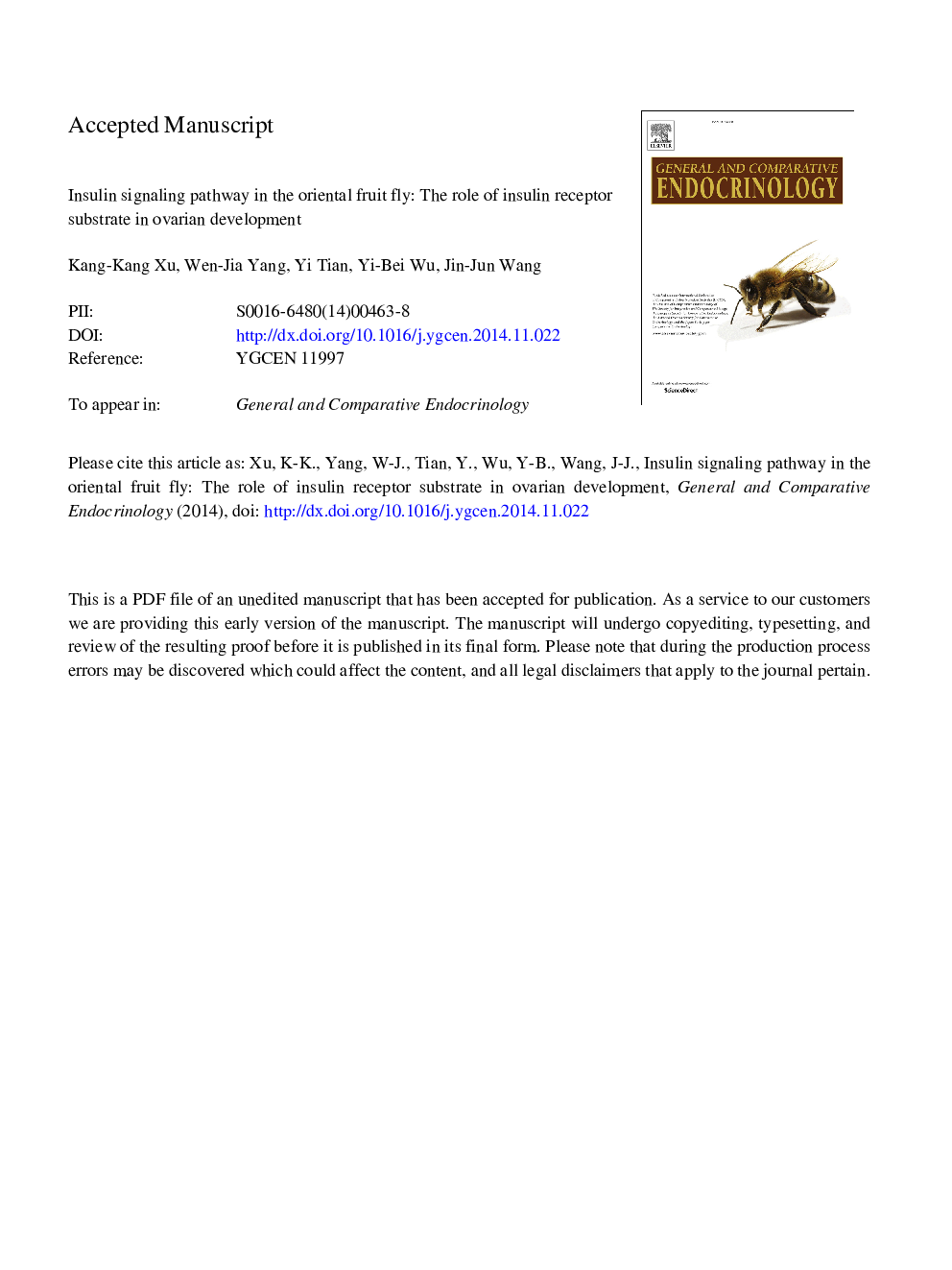| Article ID | Journal | Published Year | Pages | File Type |
|---|---|---|---|---|
| 5901007 | General and Comparative Endocrinology | 2015 | 35 Pages |
Abstract
Insulin signaling pathways have integral roles in regulating organ growth and body size of insects. Here, we identified and characterized six insulin signaling pathway components-InR, IRS, PI3K92E, PI3K21B, Akt, and PDK-from Bactrocera dorsalis. Quantitative real-time polymerase chain reaction was used to establish gene expression profiles for the insulin signaling pathway components for different developmental stages and tissues, and in response to 20-hydroxyecdysone (20E) and starvation. IRS, PI3K92E, and PI3K21B were highly expressed in the head, while InR, Akt, and PDK were most abundant in Malpighian tubules. Both IRS and PI3K92E were highly expressed during the larval-pupal and pupal-adult transition, while the remaining four genes were highly expressed only during the pupal-adult transition. Following initial exposure to 20E, the expression levels of most genes were significantly decreased. However, the expression levels of IRS, PI3K92E, and PI3K21B were significantly increased at 8 and 12Â h post-treatment compared with the control. Moreover, we found that most insulin signaling pathway genes in B. dorsalis were up-regulated in response to starvation, but decreased when re-fed. On the contrary, transcript levels of PI3K21B decreased significantly during starvation. Furthermore, injection of IRS dsRNA into adult females significantly reduced IRS transcript levels. Suppression of IRS expression inhibited ovarian development, and the average ovary size was reduced by 33% compared with the control. This study provides new insight into the roles of insulin signaling pathway components in B. dorsalis, and demonstrates an important role for IRS in ovarian development.
Related Topics
Life Sciences
Biochemistry, Genetics and Molecular Biology
Endocrinology
Authors
Kang-Kang Xu, Wen-Jia Yang, Yi Tian, Yi-Bei Wu, Jin-Jun Wang,
